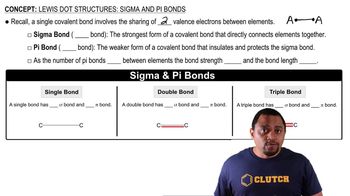Here are the essential concepts you must grasp in order to answer the question correctly.
Semiconductors
Semiconductors are materials that have electrical conductivity between that of conductors and insulators. They can conduct electricity under certain conditions, such as when doped with impurities or when exposed to heat or light. Common examples include silicon and germanium, which are widely used in electronic devices. Their ability to control electrical flow makes them essential in modern technology.
Recommended video:
Insulators
Insulators are materials that resist the flow of electric current, making them poor conductors of electricity. They have high resistivity and are used to protect against unwanted electrical flow, ensuring safety in electrical systems. Common insulators include rubber, glass, and certain ceramics. Their primary function is to prevent electrical leakage and protect users from electric shock.
Recommended video:
Lewis Dot Structures: Sigma & Pi Bonds
Band Theory
Band theory explains the electronic properties of solids in terms of energy bands. In semiconductors, the energy gap between the valence band and the conduction band is small, allowing electrons to jump to the conduction band under certain conditions. In insulators, this gap is large, preventing electron movement and thus electrical conduction. Understanding band theory is crucial for distinguishing between conductors, semiconductors, and insulators.
Recommended video:
Intepreting the Band of Stability

 Verified step by step guidance
Verified step by step guidance


